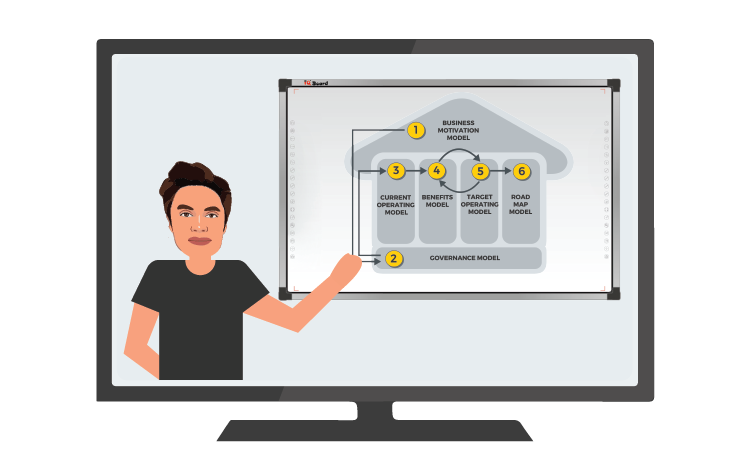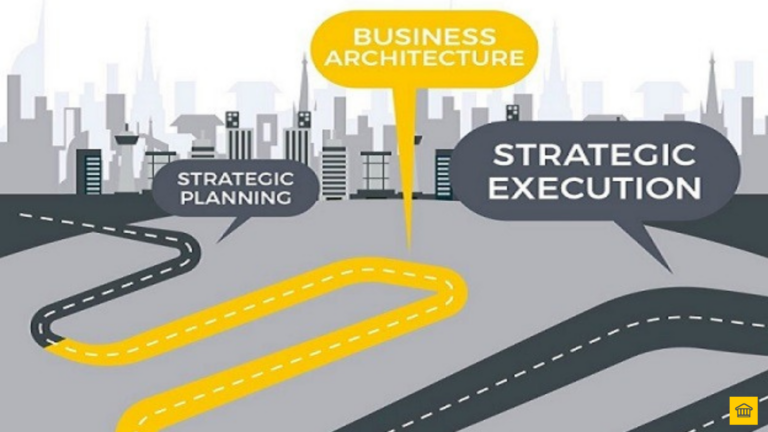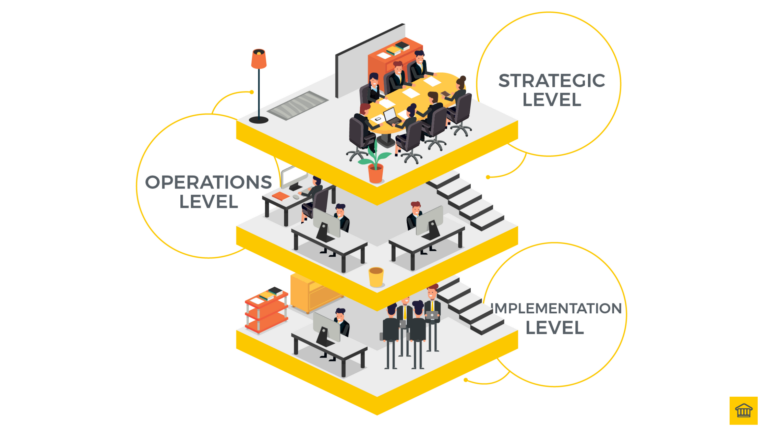Welcome to our blog post on the “8 Habits of Highly Successful Business Transformers”.
In this post, we delve into the key habits that set successful business transformers apart.
These habits are not just about personal traits, but also about the strategic and operational approaches they adopt to drive transformation in their businesses.
According to successful Business Transformators, success is more of a process rather than an overnight event. It demands consistent efforts, investment of a substantial amount of time, and dedicated commitment towards a unified goal.
Although there are no right ways to achieve success, there are certain common habits that resonate with the majority of successful Business Transformators. Let’s have a look at the 8 habits of a highly successful Business Transformator.
If you feel interested in the Do’s and Don’ts of Organisation Transformation, you can find an interactive guide here.
Heres what we’ll cover (click the links to skip to the section below):
NB – Click to expand images 📸
Table of Contents
- 1. Being a Good Coach
- 2. Empowering the Team and Avoiding Micromanagement
- 3. Express Interest in Team' Success and Well-Being
- 4. Ensuring Productivity and Maintaining a Result Oriented Environment
- 5. Practicing a Robust.Framework of Management and Providing Guidance
- 6. Value the Importance of Interactive Communication
- 7. Translating a Definite Vision and Strategy for the Team
- 8. Investing in the Development of a Teams Skills and Capabilities
- Conclusion
1. Being a Good Coach
The first and foremost trait/habit of a successful Business Transformator is to be an effective and successful coach. In order to achieve that, there are certain tips that are used by some of the best businessmen in the industry.
Self-Awareness
To make people believe in your ideas and strategies, you first need to believe in them yourself. Self-awareness is considered to be a critical step in becoming a good coach because it initiates self-belief that serves as a driving force for others to be able to relate with your ideologies.
Consider Your Individuals as Partners in the Organisation
The second-most important aspect is the introduction of the element of respect for the mentees. The individuals need to be considered as equals to recognize and value their participation.

6-Steps to Business Transformation Success
WHAT THE TOP 30% OF ORGANISATIONS KNOW THAT YOU DON’T 👉

🌟 "Effective business transformation starts with understanding the 'WHY' - the vision that inspires and guides the entire process. Without this focus, transformation efforts risk losing direction and impact." 🚀 #BusinessTransformation #Leadership
Heath Gascoigne Tweet
Discuss and Put Forth Specific and Well-Defined Solutions
A leader is always expected to have a perfected quantification mechanism that is able to quantify the problem areas with specific measurements. The team is much more comfortable in perceiving specific issues rather than a leader being unspecific about the issues at hand. It displays a lack of leadership and does not portray a healthy image in a collaborative environment.
Always Remain Open to Ideas While Achieving a Solution
One of the most important and defining habits of a successful Business Transformator is to welcome ideas and suggestions when approaching a solution. They avoid being rigid to their own solutions and engage the team to value their inputs.
2. Empowering the Team and Avoiding Micromanagement
In order to create a successful collaborative environment, a team needs to be empowered by its manager. This step might seem simple; however, it’s overshadowed by a heavy term known as micromanagement.
Micromanagement is extremely common in the business sector as the managers prefer staying in the loop to oversee the progress step-by-step. Although this might seem an effective management strategy, it has negative implications on the performance of employees.
Let’s have a look at how a successful Business Transformator walks the talk and empowers its team.

🌟 "Micromanagement is the death of productivity. Empower your team and watch them achieve greater results." 📈 #TeamEmpowerment #Management
Heath Gascoigne Tweet
Separating Themselves from the Loop
As we mentioned earlier, constant check-up on employees’ performances brings more problems than solutions. As a result, an intelligent manager chooses to step out of the loop to provide freedom to the employees to work according to their best judgements (while organizing short regular meetings to evaluate the success of the campaigns). This enables productivity and delivers a definitive sense of independence.
Be a Facilitator Rather than Being a Task-Master
It’s an undeniable fact that humans like to dictate their subordinates. However, excessive dictation often yields negative results. A successful manager adapts the approach of being a problem-solver so that the team is comfortable in reaching out for help. The inquiries regarding the tasks drop down to a minimum to initiate a display of trust in the team.
Encourage Intrapreneurship
Employees perform better when they have the liberty to maximize their creativity and skills by leading, innovating, and being a part of the vision. This boosts the morale of the team and they continue to enjoy their work.
3. Express Interest in Team’s Success and Well-Being
Humans require validation in order to complement and improve their functionality. Since Business Transformators value their employees, they have devised certain steps to express interest in both their team’s success and their well-being.
Acknowledging the Efforts
Many managers choose to opt for a negating approach of considering their employees as “resources” who do not need to be complimented, as they are being paid to do their work. Here’s why a Business Transformator is different. They effectively acknowledge the efforts and capabilities of their team to instill a sense of belonging and appreciation in the employees. This serves as a primary motivator for the employees to perform better.
Providing Support
Providing support only demands three simple factors; people need to feel they are being heard, valued, and understood appropriately. A successful Business Transformator knows that when people approach them, they need to feel comfortable while discussing their issues and need to believe that their manager will be able to listen and understand them and even provide them with an appropriate solution, if possible.
Believing in Their Abilities
You cannot expect your employees to function better if you are unable to trust their capabilities and allow them to display them with literal independence. As a result, successful managers tend to allow their teams to show their worth by banking on their instincts and performing according to their best judgements. This results in lifting the team’s spirits and allows them to handle stress with ease.
Enjoying the article so far, you might also want to learn how a set of successful leaders participate in the turnaround of your organisation transformation.
4. Ensuring Productivity and Maintaining a Result-Oriented Environment
Managers tend to achieve productivity in numerous ways, however, if they are unable to sustain a result-oriented environment, the productivity is short-lived. To ensure sustainability of productivity, successful Business Transformators adapt the following steps:
Communicating Direction and Strategy
Leaders communicate with their team to build engagement and ensure that nobody feels lost. This clears the path in achieving optimal results by perceiving the strategy to success.
Setting Stretched Goals
According to successful leaders, the formation of stretch goals motivates both the team and themselves to push harder for achieving their goals. This also ensures a process of continuous learning and self-development.
Furthermore, employees are allowed to practice and display their leadership skills in a collaborative environment, which creates an engaged work culture.
Practicing the Transmission of Instant Feedback
Although the employees are allowed to practice their methods to perform tasks, they need to be open to any and every kind of feedback. Leaders tend to walk the talk and formulate an open-door policy, which makes them accountable and open to receiving feedback, too.
Employees encourage this practice and tend to perform better when they are aware of the freedom of transmitting constructive feedback.
5. Practicing a Robust Framework of Management and Providing Guidance
The management requires a robust and consistent plan in order to maintain focus towards the end goals. We, at HOBA, are consistently providing various robust frameworks that help different businesses establish fail-proof transformation mechanisms.
We assess, evaluate, and analyze the loopholes present in the current managerial systems of the businesses and devise effective and practical long-term solutions. Furthermore, we pinpoint the factors that are missing and are necessary in the pursuit of developing a sustainable business transformation mechanism.
If you are interested in the establishment of a thorough and convincing business transformation mechanism, you might want to head over to: HOBA – Business Transformation Toolkit.
6. Value the Importance of Interactive Communication
One of the most defining factors in becoming a successful Business Transformator is the ability of being a great communicator. Let’s have a look at some of the important factors that distinguish a successful Business Transformator from a mediocre leader.
Develop Trust
You can attempt to demand trust all you want, but you won’t achieve it without creating a comfortable environment first. Therefore, a successful leader strives to develop a comfortable and supportive environment for its employees to be able to interact openly.
Such leaders take appropriate decisions and display a positive mindset to put the employees at ease and allow them to feel comfortable.
Practicing Specificity and Getting Personal
Although there are certain rules that are essential to maintain the professional decorum, successful leaders tend to bypass it and get interactive with their team members. The monologue-powered style of communication is the norm, however they tend to initiate dialogs to produce more engagement in the conversations.
Their ideology is inspired by the following quote:“People don’t care how much you know until they know how much you care.”
Furthermore, being specific yields meaningful results rather than having ambiguous communications. Since time is of the greatest importance today, successful leaders tend to be specific and precise. This helps them instill the significance of specificity in the team.
Have an Open Mind and Listen
Majority of the leaders tend to believe that they know it all. This gives a negating perception to their employees as the managers are extremely rigid towards the team’s suggestions and ideas.
However, a successful Business Transformator does the opposite. The team members are given the extensive liberty to exercise their right of interactive communication by participating in the conversations and pitching in with their ideas and suggestions.This helps boost the confidence of the personnel and instills a sense of belonging amongst them.
Don’t forget to add into the equation regular meetings to track progress. For instance, you can opt for daily standup agile scrum meetings to set in place the tasks and goals for the next day. This speeds up the entire work progress and ensures no one gets side-tracked.
7. Translating a Definite Vision and Strategy for the Team
An effective leader is expected to be able to execute the vision amongst the team so that the team has a definitive direction to follow. This translation of vision and strategy towards the team can be done by using the following steps:
Define and Communicate Vision
Although it’s a no-brainer, the communication of vision ensuring that the team is able to comprehend it, holds great significance. Vision is basically a vivid depiction of the future of your organisation and it needs to be imprinted in the minds of your employees to align their performance with the goals.
Strategic Thinking
Although the formation and regulation of a unified vision throughout the team holds great importance, managers need to devise appropriate strategies to formulate a path towards the vision.
Successful leaders tend to create a depiction of the future (by planning and defining short-term goals) to help the employees imagine what the end goals would feel like. Surprisingly enough, this serves as a motivator for the employees to perform their tasks better when they have a definitive imagination of their goals.
Planning and Prioritization
The most effective factors in the successful execution of a business strategy are the processes of planning and prioritization of different tasks. According to the successful Business Transformators, the appropriate prioritization of tasks is an essential aspect of meaningful planning for businesses (that does not result in failure).
Looking for the Best Training to deliver your Business Transformation? Search no more!
- 30-Day Money-Back Guarantee
- Risk FREE

🌟 "Leaders who don't invest in their team's skills and capabilities are setting themselves up for failure. Continuous development is key." 🔑 #ContinuousImprovement #SkillDevelopment
Heath Gascoigne Tweet
8. Investing in the Development of a Team’s Skills and Capabilities
While instilling a sense of belonging and entrusting your employees is essential, the key to a Business Transformators’ success is their perception of investing in the constant development of the team’s skills and capabilities.
Here’s how they do this the right way:
Do the Employees Understand Their Roles?
This might sound unrealistic but even after understanding the basic roles of their jobs, many employees are unable to have an in-depth insight of the purpose of their roles. Business Transformators have a strategy to interact more often with employees to ensure that they are well aware of their roles.
Provide Training and Development Sessions
The accessibility of training and development tools alongside interactive and helpful training sessions serve as stepping stones for employees to consistently grow and evolve. This helps the employees to unlock their hidden potentials and test different waters.
Since the recent pandemic has affected the majority of the business sector in recent times, we incorporated a set of Business Transformation Strategies to Combat COVID-19 in these uncertain times.
Conclusion
In conclusion, transforming a business successfully involves more than just strategies; it’s about adopting the right habits and mindset. From being a good coach to empowering your team and ensuring interactive communication, these habits are essential for driving effective change.
To learn more about how HOBA Tech can assist in your business transformation journey, visit our website or contact us to discuss tailored solutions for your organization.
There you have it, that’s your 8-Habits of Highly Successful Business Transformators.
Hope you found value in it.
Let me know what you think or would like to see next in the comments below!
Thank you for reading this!
Sincerely,

Heath Gascoigne
P.S. If you want to join our Business Transformator community of 2,000+ like-minded Business Transformators, join the community on the Business TransformatorFacebook Group here.
P.P.S. If you want to learn more about business transformation, check out The Business Transformation Playbook here.
For more information, visit https://www.hoba.tech













